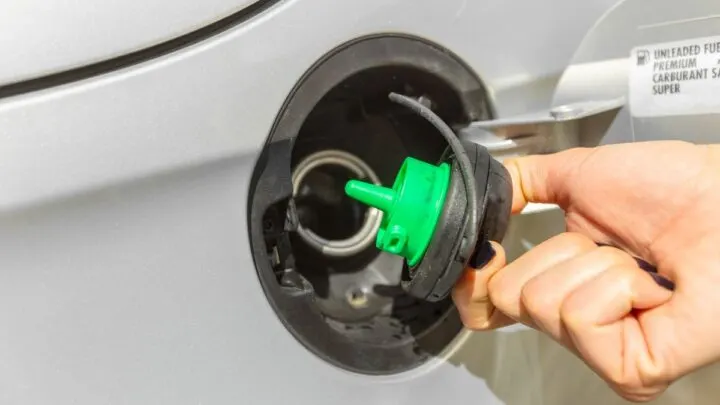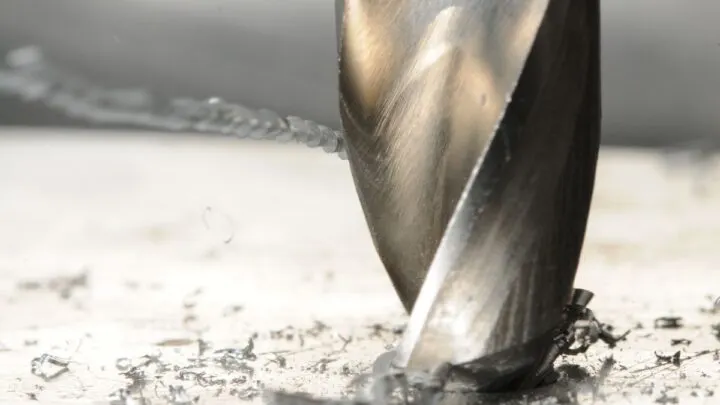Have you ever wondered why gas caps look the same? They may look quite similar, but they have structural distinctions that suit their purpose.
The gas cap is an important part of the Onboard Diagnostic (OBDII) and Evaporative Emission Control (EVAP) Systems.
Additionally, it performs its original duties, preventing fuel from leaking out of the tank during rollovers or when cornering. Currently, many vehicles with small motors and engines vent through their gas caps.
But what about car gas caps? Are they vented?
Some gas caps are vented, while others are not. Most cars up through the 1960s and early 1970s have vented gas caps, since that was one way that you could vent the tank. However, all modern cars have other venting designs and use non-vented gas caps.
As a result, they may or may not require you to use a vented gas cap. Read on to learn more about why this is.
Can I Use a Vented Gas Cap When the Vent Line Is Clogged?
Using a vented gas cap is possible when your vehicle’s gas tank vent line is clogged. However, doing so is dangerous, and you should avoid it at all costs.
Today’s fuels have additives that cause them to expand more than they would some decades prior, when vented gas caps were still common.
Furthermore, some modern gas tanks rely on internal fuel pumps to direct fuel to the engine.
And due to design preferences or limitations, these internal pumps use fuel to cool themselves.
The resulting heat transfer raises the gas tank’s ambient temperature by a few degrees, causing even more vapors and greater expansions.
To combat this, you would need several vents in your gas cap.
However, this design is flawed since more vents lead to more vapor leakages, and in extreme cases, they may weaken the structural integrity of the gas cap. Therefore, you shouldn’t replace a vent line with a vented gas cap.
How Do Vented Gas Caps Work?
Storage tanks’ fire codes, maintenance requirements, and design specifics exist for a reason.
And more so when dealing with automobiles that carry fuel within their tanks.
FYI, none of these measures will ensure your safety unless the manufacturers implement them perfectly, leaving no room for error.
The normal venting we often see in our automobile gas caps maintains the pressure inside the tank when fuel gets in and out.
And as we know, the only standard way fuel gets out of the tank is through siphoning or when used up for internal combustion within the engines.
The only way it gets in is through the fuel filler neck when we’re refueling.
Now, imagine a scenario whereby you’ve just refueled and replaced your gas cap, ready for your 200-mile drive upcountry.
Obviously, your internal combustion engine uses more fuel from the gas tank as you cover greater distances.
What will happen if your car gas tank has no venting at all? What happens when your tank cannot vent through the charcoal canister or the vented gas cap?
The result is that a vacuum is created since there’s no air to replace the burnt fuel, resulting in negative pressure.
The negative pressure will then cause a suction force that prevents enough fuel from getting to the engine.
Also, you may experience fuel leaks and, in extreme cases, tank bulging.
To prevent such, manufacturers drilled one or two-minute openings on the side of the gas cap to allow air into the tank.

Signs That Your Gas Tank Vent Is Clogged
There’s been a significant reduction in blocked gas tank cases since automobile manufacturers shifted towards charcoal canister venting over vented gas caps.
Consequently, most of us drive our vehicles for thousands of miles before encountering any clogging or blockages.
Additionally, signs of gas tank vent clogging may seem ambiguous and may not directly inform you that it’s the venting causing the problem.
Therefore, look for the following signs indicating that your gas tank needs venting.
- Your car keeps on stalling
- Poor vehicle performance
- Challenges filling the tank resulting from tank back pressure
- Your vehicle may not start at all
As you can see, the above signs are pretty common in automobiles and aren’t exclusive to clogged vents. As a result, consult a professional mechanic once you experience such signs.
How to Vent a Gas Cap
As we’ve seen, modern cars use other venting designs, and their gas caps are not vented.
If you’re driving an older car (pre-1970s models) and you’ve lost the original gas cap, you may have to buy a new one, or you can vent one yourself.
Materials Needed
- 1/8″ National Pipe Thread (NPT) tap
- Breather fitting
- 1/16″ drill bit
Here’s How You Can Vent Your Gas Cap
- First, center punch the top of your gas cap to aid direct the drill bit and prevent it from wandering.
- Next, drill all the way through the gas cap using a 1/16″ drill bit.
- Next, flip the cap, use a 5/16″ bit, and drill enough room for the fitting. Here, ensure to leave sufficient room to enable you to tap deep, but don’t drill through the cap.
- Use some cutting fluid and the 1/8″ national pipe thread tap to create a good tread within the drilled hole.
- Afterward, blast some compressed air and brake cleaner through the hole to remove metal chips and cutting fluid.
- Finally, install the breather fitting into the hole, and there you have your vented gas cap.

Alternative Method
You can opt for a second method, requiring a drill and a few drill bits. Here’s how you’ll vent your gas cap using this method.
- First, drill a hole 1/8″ in diameter, half to three-quarters, through the gas cap.
- Second, drill a smaller hole using a 1/16″ through the sides of the cap, ensuring that it is perpendicular to the bigger hole. Stop drilling once the two holes meet and provide a 90-degree air passage.
- This allows the gas cap to vent, while the 90-degree angle prevents gas vapors from escaping to the outside.
Venting gas caps has one major design challenge you must always consider. Venting maintains a healthy pressure within the tank, but it shouldn’t be big enough to allow debris into the tank or fuel vapors to escape.
Final Remarks to Gas Caps Being Vented
Gas caps are crucial in maintaining the fuel tanks’ internal pressures. If you have a vented tank, you don’t necessarily need to use a vented gas cap.
However, if your vehicle’s fuel tank has no venting whatsoever, you must consult a mechanic before settling on a vented gas cap.
